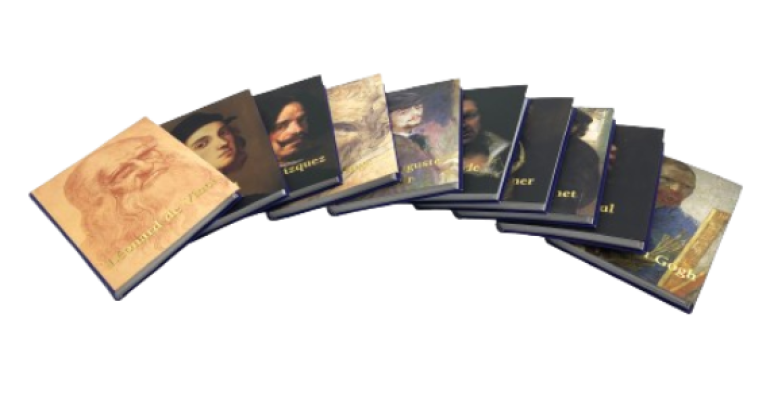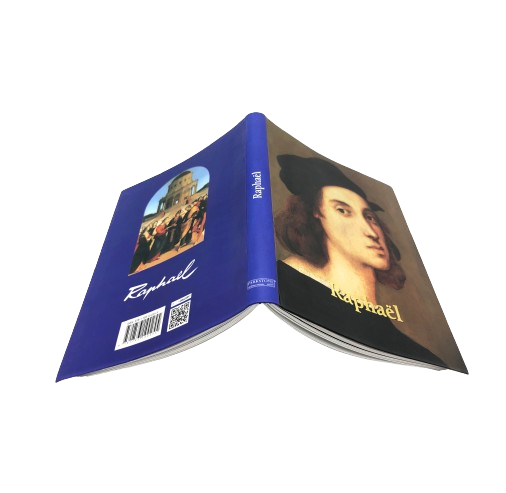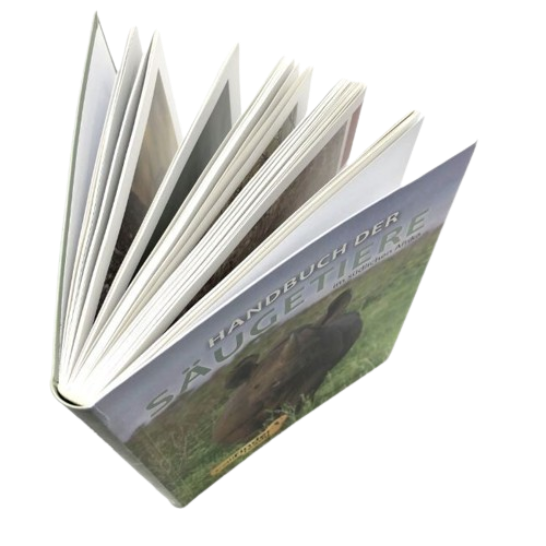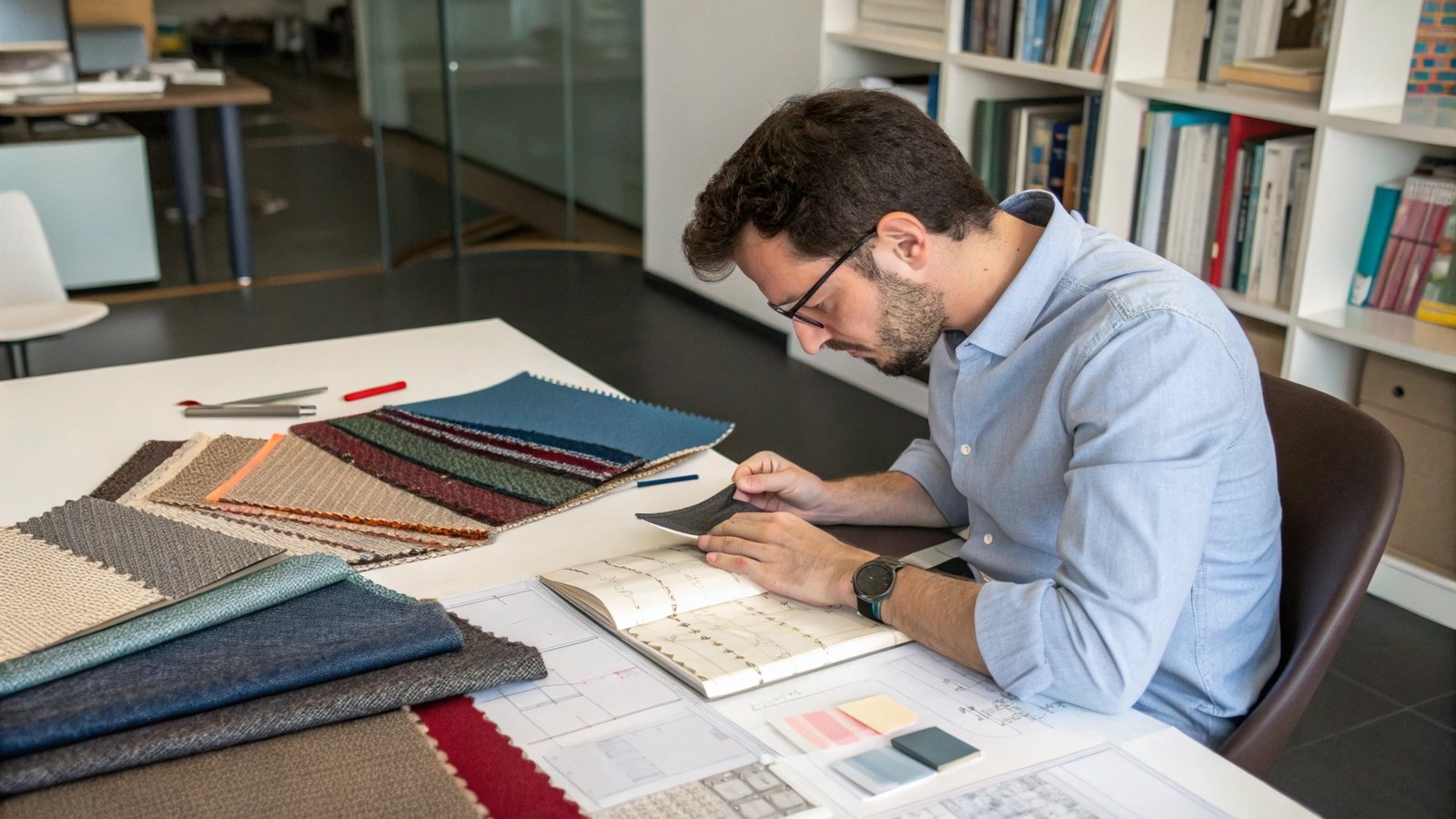Struggling to choose a binding? Hardcovers are too heavy, and paperbacks feel cheap. You need a middle ground that offers both quality and portability for your book project.
A flexibound book is a high-quality binding style that uses a flexible, yet durable, card stock cover. It combines the premium sewn-page construction of a hardcover with the lightweight portability of a paperback, offering a perfect balance of value, durability, and user experience.
This binding style often gets overlooked, but it might be the perfect solution for your next project. It offers a unique combination of features that can elevate a book from standard to special. Having spent my entire life in the printing world, I’ve seen how the right binding can completely transform a reader’s experience. Let’s explore what makes flexibound so unique and see if it’s the right fit for you.
What does it mean for a book to be flexibound?
You’ve heard the term "flexibound," but what does it actually mean for construction? Not knowing could mean missing out on a binding that perfectly fits your book’s needs.
A book is flexibound when it features a pliable cover over a book block constructed like a hardcover. The pages are Smyth-sewn into signatures and attached with endpapers. This allows the book to lay flat when open, providing superior durability and a premium user experience.
When we talk about a book being flexibound, we are talking about a specific method of construction that blends features from both hardcover and paperback styles. I remember working with a client who was creating a high-end journal. They wanted something that felt substantial and would last all year, but a traditional hardcover felt too rigid and formal for daily journaling. Flexibound was the perfect answer.
The Cover
The most noticeable feature is the cover. Instead of the thick, rigid greyboard used in a hardcover, a flexibound book uses a heavy, flexible card stock. This cover is then often wrapped with printed paper, cloth, or a synthetic material like imitation leather1. The key here is "flexible." You can bend the cover easily, which makes the book feel more approachable and comfortable to hold than a stiff hardcover. The cover also typically has an overhang, where it extends slightly past the edges of the book block, just like a hardcover.
The Binding
Internally, a flexibound book is built for durability. The pages are not simply glued to the spine like a paperback. Instead, they are printed on large sheets, folded into sections called "signatures1," and then sewn together with thread. This is called Smyth sewing2. This sewn book block is then attached to the cover using sturdy endpapers. This high-quality construction is why flexibound books can lay flat when opened, making them ideal for cookbooks, manuals, and journals where you need to keep your hands free.
What is the difference between hardbound and Flexibound?
You need a durable book, but the weight and cost of a hardcover are concerns. Choosing the wrong option can impact your budget and how your audience uses the book.
The key difference lies in the cover board. A hardbound book uses a thick, unbendable board, making it heavy and extremely durable. A flexibound book uses a thinner, pliable card stock, making it significantly lighter and more portable while retaining a strong, sewn binding.
Choosing between hardcover and flexibound really comes down to the intended use and desired feel of the book. While their internal construction is often very similar (Smyth-sewn pages, endpapers1, head and tail bands2), the experience of holding and using them is quite different. A client of mine produces annual industry reports. For years, they used hardcovers. When we showed them a flexibound option, they switched immediately. It saved them a significant amount on shipping costs and their clients preferred the lighter format for carrying to meetings. It looked just as professional but was far more practical.
Let’s break down the primary differences in a simple table:
| Feature | Hardbound (Casebound) | Flexibound |
|---|---|---|
| Cover Board | Thick, rigid greyboard (e.g., 2.5-3mm) | Flexible card stock (e.g., 300-400 gsm) |
| Feel | Stiff, substantial, very formal | Pliable, durable, premium but less formal |
| Weight | Heavy | Lightweight |
| Best For | Collector’s editions, textbooks, library books | Journals, cookbooks, travel guides, yearbooks |
| Cost | Highest | Mid-range (more than paperback, less than hardcover) |
Essentially, you can think of a flexibound book as a "soft hardcover." It keeps the premium, durable elements like the sewn binding but swaps the rigid board for a flexible one. This makes it a fantastic choice when you want the longevity of a hardcover without the bulk and weight.
What is the difference between flexibound and paperback?
Is flexibound just a fancier, more expensive paperback? This common misconception can lead you to choose a binding that falls apart when you need it to last the longest.
The biggest difference is the binding method. A paperback uses a "perfect binding," where pages are glued to the spine. A flexibound book uses a "Smyth-sewn" binding, where pages are sewn together in sections, making it dramatically more durable and allowing it to lay flat.
The distinction between flexibound and paperback is critical, as it directly impacts the book’s lifespan and usability. While they might both have soft covers, how the pages are held together is worlds apart. I often have to explain this to new publishers. They see the soft cover and think "paperback," but when I show them the inside, they see the difference. A paperback is designed for affordability and is perfect for mass-market fiction. But if you try to use a perfect-bound cookbook every day, the spine will eventually crack and pages will fall out. That won’t happen with a flexibound book.
Here’s a comparison to make the differences clear:
| Feature | Flexibound | Paperback (Perfect Bound) |
|---|---|---|
| Binding Method | Pages are sewn together in signatures | Pages are cut and glued to the spine |
| Durability | Very high; pages will not fall out | Lower; spine can crack with use |
| Lay-flat Ability | Excellent; lays flat when open | Poor; tends to close on its own |
| Cover | Sturdy, flexible card stock with an overhang | Thinner card stock, usually flush with pages |
| Perceived Value | High; feels like a premium product | Standard; mass-market feel |
The sewn binding is the true hero of the flexibound format. It provides the strength and flexibility that glue simply cannot match. This makes it the superior choice for any book that will see frequent or heavy use, justifying its higher cost compared to a standard paperback.
What to consider when designing a flexibound book cover?
You’ve chosen flexibound, but how do you design for it? A generic design wastes the format’s potential, failing to create that premium feel you’re paying for.
Focus on leveraging the unique material and finishing options. Choose a cover wrap like cloth or imitation leather, and add tactile finishes like foil stamping or debossing. Also, consider functional add-ons like a ribbon marker or elastic closure to enhance the user experience.
Designing for a flexibound book is exciting because it opens up so many creative possibilities that go beyond a simple printed cover. When a customer comes to me for a flexibound project, like a premium notebook or a special edition guide, we always start by talking about the "touch and feel." How should this book feel in your hands? The design choices you make will answer that question and define the product’s character.
Cover Materials
You aren’t limited to just a printed paper wrap (though that is a great option!). Flexibound covers are perfect for other materials.
- Cloth/Linen: This gives the book a classic, sophisticated feel. It’s excellent for journals, yearbooks, or special anniversary editions.
- Imitation Leather: Also known as faux leather or PU leather, this option provides a rich, executive look without the cost of real leather. It’s durable and comes in many colors and textures.
Special Finishes
Because the cover is sturdy, it can handle a variety of special finishing processes that add visual and tactile appeal.
- Foil Stamping: Applying a metallic or colored foil creates an eye-catching, high-end look.
- Debossing/Embossing: Pressing a design into the cover (debossing) or raising it up (embossing) adds a subtle, elegant texture.
- Spot UV: Applying a clear, glossy coating to specific areas of the design can make certain elements pop.
Functional Add-ons
Think about how the book will be used and add features that improve its functionality.
- Ribbon Marker: Essential for journals, planners, and Bibles.
- Elastic Closure: A simple band that holds the book shut, perfect for notebooks and guides that are carried in a bag.
- Rounded Corners: This small detail can give the book a softer, more modern look and helps prevent the corners from getting bent.
Conclusion
Flexibound binding offers a fantastic balance of durability, premium feel, and portability. It’s a versatile choice that elevates your project beyond a simple paperback without the hardcover’s cost.








